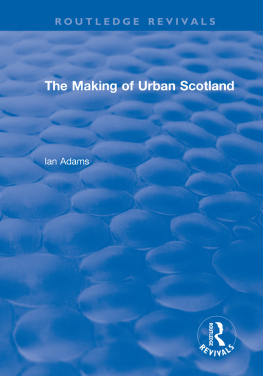
Routledge Revivals
Leisure and the Changing City 1870 1914
By the late nineteenth century, the city had become the dominant social environment of Britain, with the majority of the population living in large cities, often with over 100, 000 inhabitants. The central concern of this book, first published in 1976, is to assess how successful the late Victorians were in creating a stimulating social environment whilst these developing cities were being transformed into modern industrial and commercial centres. Using Bristol as a case study, Helen Meller analyses the new relationships brought about by mass urbanisation, between city and citizen, environment and society. The book considers a variety of important features of the Victorian city, in particular the development of the main cultural institutions, the provision of leisure facilities by voluntary societies and the expansion of activities such as music, sport and commercial entertainment. Comparative examples are drawn from other cities, which illustrate the common social and cultural values of an urbanised nation. This is a very interesting title, of great relevance to students and academics of town planning, Victorian society, and the history and development of the modern city.
Leisure and the Changing City 1870 1914
Helen Meller
First published in 1976
by Routledge & Kegan Paul Ltd
This edition first published in 2013 by Routledge
2 Park Square, Milton Park, Abingdon, Oxon, OX14 4RN
Simultaneously published in the USA and Canada
by Routledge
711 Third Avenue, New York, NY 10017
Routledge is an imprint of the Taylor & Francis Group, an informa business
1976 Helen Meller
All rights reserved. No part of this book may be reprinted or reproduced or utilised in any form or by any electronic, mechanical, or other means, now known or hereafter invented, including photocopying and recording, or in any information storage or retrieval system, without permission in writing from the publishers.
Publishers Note
The publisher has gone to great lengths to ensure the quality of this reprint but points out that some imperfections in the original copies may be apparent.
Disclaimer
The publisher has made every effort to trace copyright holders and welcomes correspondence from those they have been unable to contact.
A Library of Congress record exists under LC control number: 76383866
ISBN 13: 978-0-415-84213-6 (hbk)
ISBN 13: 978-0-203-76293-6 (ebk)
LEISURE AND THE CHANGING CITY, 1870-1914
H. E. MELLER
Department of Economic and Social History University of Nottingham
First published in 1976
by Routledge & Kegan Paul Ltd
39 Store Street,
London WC1E 7DD,
Broadway House,
Newtown Road,
Henley-on-Thames,
Oxon RG9 1EN and
9 Park Street,
Boston, Mass. 02108, USA
Set in 11 on 12 pt Linotype Granjon
and printed in Great Britain by
Willmer Brothers Limited, Birkenhead
H. E. Meller 1976
No part of this book may be reproduced in
any form without permission from the
publisher, except for the quotation of brief
passages in criticism
ISBN 0 7100 84307
LIST OF ILLUSTRATIONS
PLATES
J. Storrs Fry 18261913
Mark Whitwill 18261903
H. O. Wills 18281911
Lewis Fry 18321921
Bristol Art Gallery 1905
Bristol Art Gallery, Interior
Jacobs Wells Swimming Bath 1884
Close up of city coat of arms, Jacobs Wells Swimming Bath
Central Reference Library, Bristol, built 1906
Interior of Central Reference Library
Bristol Museum and Library 1871
The Peoples Palace 1892
A cycle rally in Clifton 1886
The Industrial and Fine Arts Exhibition 1893
The Bristol YMCA, by S. Loxton
Clifton College Mission to St Agnes, Mens and Boys Club
St Agnes Working Mens Club Committee
DRAWINGS
Drawings by S. Loxton, from the manuscript collection at the Bristol Reference Library
I should like to acknowledge with many thanks the generous help of Mr Geoffrey Langley, County Reference Librarian, with the selection of these illustrations. are published with the kind permission of Reece Winstone.
The purpose of this book is to explore the social and cultural environment of a large city at a time, in the nineteenth century, when cities had become the dominant, social environment of the nation. How successful were the late Victorians in carrying out a stimulating social environment from the unpromising material of a large industrial city? Such a theme demands a focus, since it can be all-embracing. This study is limited in two ways: to a manageable context, an individual city, in this instance the city of Bristol; and second, to the attempts made by those citizens who responded in a specific, self-conscious way to this challenge by providing leisure and cultural facilities.
This is a narrow framework, particularly as it excludes the largely undocumented day-to-day experiences of the majority of citizens, which make up an important part of the social environment. But it does make possible a closer study of the link between the growth and changing physical form of nineteenth-century cities and the social responses that were made to it. The choice of Bristol for a case-study has no further significance than its size. All large cities of more than 100,000 population were becoming transformed by modernizing factors, so that they all shared common elements of change, whatever differences were to be found in their economic structures. Thus the history of Bristol can provide an insight into the social response to a changing urban environment of more general significance than the local context.
This study contains much material from a doctoral thesis submitted to the University of Bristol. It gives me great pleasure to record my warmest thanks to Professor William Ashworth, who acted as my supervisor for the thesis, and whose constant encouragement and creative criticism have been of inestimable value to me, both then and now. I have especially to thank him and Professor Sidney Pollard for reading the manuscript and for offering so many helpful comments. Many other people have given me much help and advice. I should like to express my deepest gratitude to Mr Patrick McGrath for his attempts, made from his great knowledge of Bristols history, to help me avoid errors of fact; to Dr B. W. E. Alford for his kind response to my queries about Bristols economic structure; and to Mr Large and Mr Sherborne and other members of Bristol University, particularly the library staff, who have offered me much advice and encouragement. My thanks are also due to Professor H. J. Dyos, for his encouragement and suggestions on the best ways of utilizing the thesis for a book; and to Professor J. P. Cole, for his advice on the historical geography of large towns.













